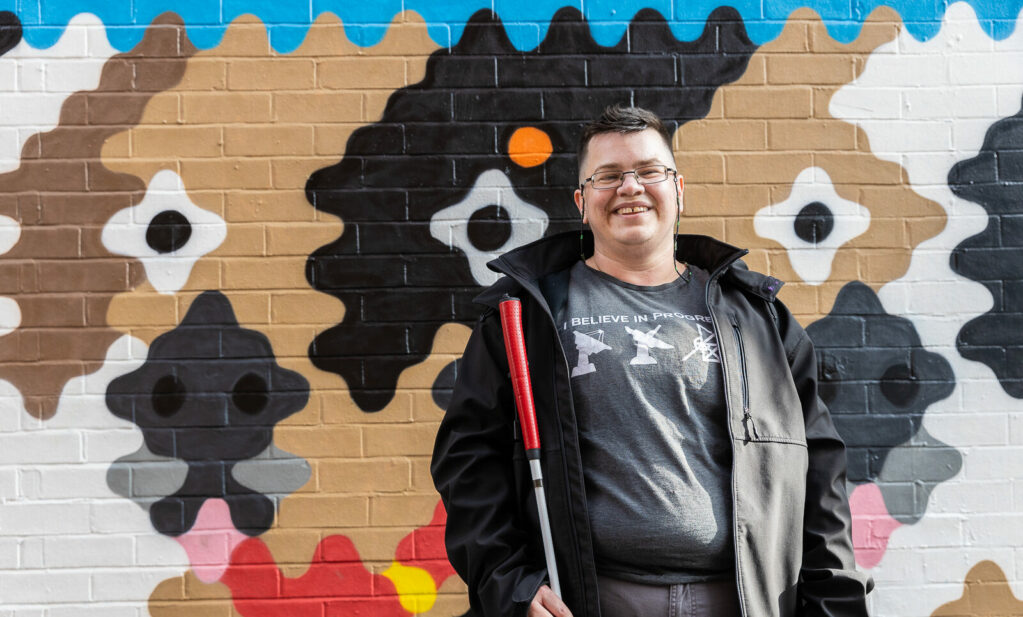Buggies, buses and wheelchair priority: where next?
Transport for All
Wheelchair users are heavily dependent on...
Wheelchair users are heavily dependent on buses to get around London because so few Tube stations have step-free access. But bus travel for wheelchair users in London is not always easy.
The recent and well-publicised Appeal Court case involving Doug Paulley and the bus company called First Bus has highlighted this issue.
Mr Paulley took First Bus to court in 2013 after he had been denied access to one of their buses because a buggy owner refused to make room for him in the wheelchair space. He won his case, and you can read about that verdict in our news item here. First Bus subsequently appealed against this verdict in November 2014. Transport for All has supported Mr Paulley from the beginning, and a large group of Transport for All members was present at the appeal hearing. The media were present too, interviewing Mr Paulley and his supporters, who included Dame Tanni Grey-Thompson.
This case has wide implications for wheelchair users who want to travel by bus. If the original verdict in Mr Paulley’s favour is upheld by the Court of Appeal, then a legal precedent will have been set: the requirement in law to give a wheelchair user access to the wheelchair space will be absolutely undeniable, and all bus companies will have to change their policies and procedures to cater for this obligation. In addition, anyone who has, in the previous six months, been denied access to a wheelchair space not already occupied by another wheelchair will be able to bring a case against the bus company and seek legal redress.
Wheelchair spaces on buses were introduced after a long period of campaigning by individuals and by organisations including Transport for All. They bring buses into compliance with the Equality Act 2010, which requires providers of goods and services to make reasonable adjustments so that disabled people are not at a disadvantage for reasons relating to their disability.
But many problems remain. In addition to problems created by the conflict between wheelchair users and those buggy users who refuse to give up the space, bus drivers also create problems for wheelchair users.
A London bus driver has a set of procedures which must be followed when a wheelchair user wants to board the bus. These are laid down in TfL’s Big Red Book, the bus drivers’ manual, and I’ve summarised at the end of this article what the bus driver must do. But many drivers are unfamiliar with these procedures, or ignore them. Some people carry a copy of the Big Red Book, or print pages from it, to show the bus drivers what they should already know.
Bus ramps are another source of difficulty. Many ramps are broken, or too short and steep to use safely, or have a step at the point where they join the bus.
A great deal needs to change before buses are truly accessible, and before wheelchair users can use them without stress and distress. Transport for All continues to campaign for full transport accessibility in London, and receives many calls each week from people who have had problems accessing buses, problems with ramps, buggies and drivers.
Transport for All would like to work with bus companies and with buggy manufacturers to help find solutions which will allow everyone to use buses without difficulty or conflict. These solutions could include designing larger shared wheelchair/buggy spaces; better bus ramps; and simpler, smaller buggies which are better suited to bus travel, where the need to fold the buggy at short notice can often arise.
Please join us if you would like to support our campaigns – you can find out here how to become a member.
What TfL’s bus drivers must do when a wheelchair user wishes to board
The bus driver must:
- Acknowledge the wheelchair user as the bus pulls up to the stop.
- Broadcast an automated message saying that the wheelchair space is needed and must be cleared.
- Keep the front door closed while the wheelchair user boards, so that the flow of incoming passengers does not obstruct access to the wheelchair space.
- Talk to anyone obstructing the wheelchair space and ask them to clear the space
- Issue a transfer ticket to any buggy owners who are kind enough to leave the bus in order to make space.
- If the wheelchair user cannot board the bus because the wheelchair space cannot be cleared for some reason, explain the situation and contact the garage to ensure that the next bus driver is aware that a wheelchair user is waiting to be picked up.
- Keep the bus stationery until the wheelchair user is safely settled into the wheelchair space.
- Listen for the special blue buzzer button, which tells the driver that the wheelchair user wants to get off at the next stop and will need the ramp.
Chris Stapleton


